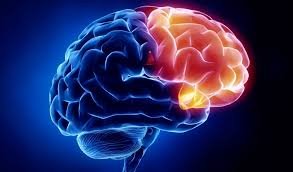New Study Shows Use of NeurOptics’ Automated Pupillometry Improves Triage for Patients with Traumatic Brain Injury

NPi-200 Pupillometer Measures Pupillary Light Reflex to Identify Patients who Require Immediate Treatment, Expediting Care
LAGUNA HILLS, Calif.: A new study published in the journal World Neurosurgery demonstrated that automated infrared pupillometry can improve triage and expedite treatment for patients with traumatic brain injuries. Automated infrared pupillometry is an objective assessment of the pupillary light reflex that is measured using NeurOptics’ NPi®-200 Pupillometer.
The prospective pilot study analyzed 36 patients at UT Southwestern Medical Center’s level-1 trauma center to explore the use of automated infrared pupillometry for triaging patients with traumatic brain injury (TBI) between November 2019 and February 2020. The automated pupillometer readings of consecutive patients who presented with blunt TBI and abnormal imaging findings in the emergency department were recorded using the infrared NPi-200 Pupillometer, which calculates a Neurological Pupil index (NPi). NPi values range from 0 to 4.9, with scores under 3 considered abnormal.
Patient NPi scores were reported as normal (a score of 3 or higher) or abnormal (a score less than 3). When comparing groups of patients who required intervention and those that did not, NPi scores were significantly lower for the intervention group, and NPi was normal in all patients who did not require intervention.1 The data suggest that the NPi is a useful early parameter to consider when triaging patients with TBI and could influence clinical and surgical decisions.
“Identifying and responding to neurological changes as early as possible is critical for patients with traumatic brain injury,” said Salah Aoun, MD, Assistant Professor in the Department of Neurological Surgery at UT Southwestern Medical Center and study investigator. “These results show that the presence of an abnormally low NPi score could serve as a signal to prompt first responders or triage clinicians to prioritize transfer and care. A portable device like the NPi-200 has the potential to change the way brain injuries are initially assessed and expedite care for patients who have suffered a severe TBI."
Traumatic brain injury is a leading cause of mortality and disability in young adults and affects more than 60 million people every year worldwide.2,3 Early management of care for patients with severe TBI is based on neurologic assessment, primarily reflected by the Glasgow Coma Scale (GCS) and an evaluation of computed tomography (CT) scans.4-6 However, current TBI guidelines apply only after transport to treatment centers and do not address patient triage in the field or in transit.
Automated assessment of the pupillary light reflex has emerged as an objective means of assessing pupillary reactivity across a broad spectrum of neurological disease, including traumatic brain injury, stroke, edema, tumoral herniation syndromes, and sports and war injuries. Pupillometers use infrared technology to assess an array of objective pupillary variables including size, constriction velocity, latency, and dilation velocity, which are normalized and standardized to compute the Neurological Pupil index. The NeurOptics NPi-200 Pupillometer eliminates the variability and subjectivity inherent in manual pupillary evaluation (performed using a penlight), providing more accurate, reliable, and objective pupil size and reactivity measurement for this vital component of neurological examinations.
The study, titled Automated Pupillometry as a Triage and Assessment Tool in Patients with Traumatic Brain Injury, can be found here.















































